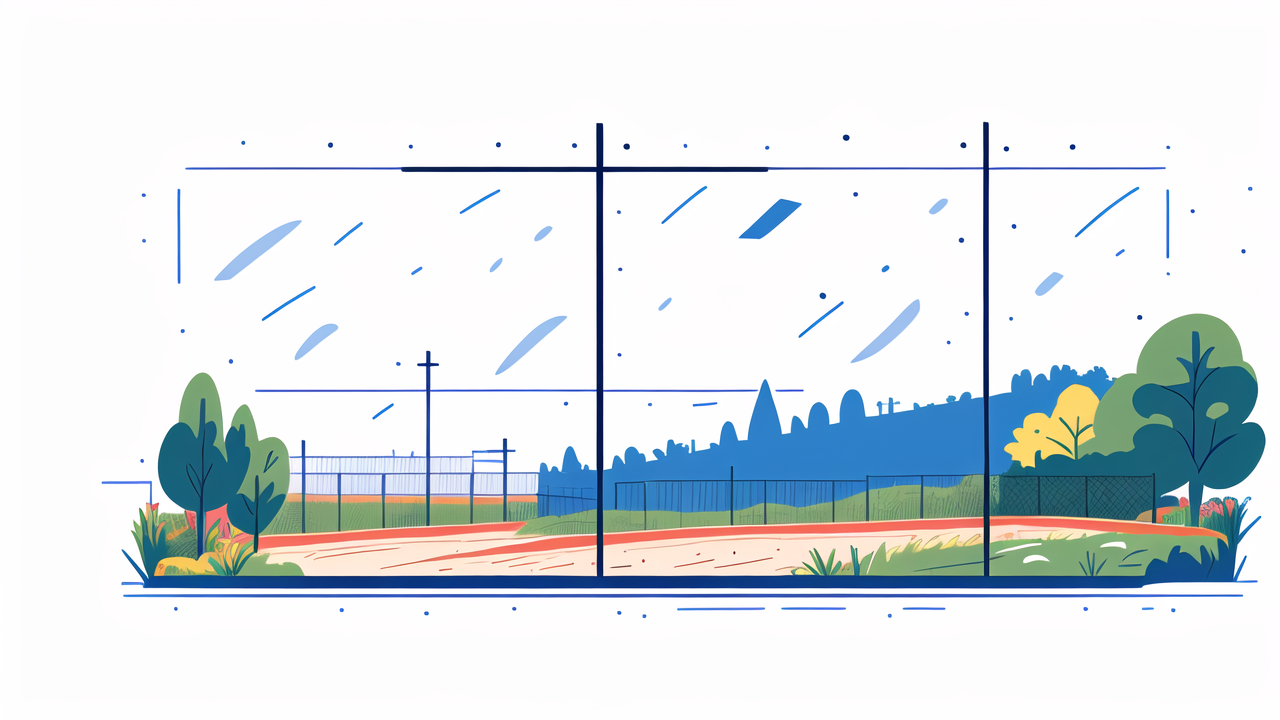Understanding the Basics of Fence Bracing
Why Proper Fence Bracing is Essential
Proper fence bracing is crucial for the longevity and stability of your garden fence. It prevents leaning, sagging, and collapse, especially in harsh weather. Good bracing distributes the load evenly, reducing stress on individual posts. This ensures your fence stays upright and functional for years.

Bracing also enhances the overall aesthetic appeal of your fence. A well-braced fence looks neat and professional. It adds value to your property and creates a safe boundary. In windy areas, proper bracing is even more important. It helps your fence withstand strong gusts without damage.
The Fundamentals of Inground Post Design
Inground post design is key to a sturdy fence. The depth of the post hole is crucial. It should be at least one-third of the post's height plus an extra 6 inches for gravel. This depth provides a solid foundation against wind and soil movement.
The diameter of the hole matters too. It should be three times the width of the post. This allows enough space for concrete or gravel fill. The type of soil in your yard also affects post design. Clay soils may require deeper holes for stability.
Proper drainage is essential in post design. A layer of gravel at the bottom of the hole prevents water buildup. This reduces the risk of rot and frost heave in colder climates.
Strategies for Installing Secure Inground Posts
Selecting the Right Materials for Your Fence Posts
Choosing the right materials is vital for long-lasting fence posts. Wood is a common choice, with cedar and pressure-treated pine being popular options. These woods resist rot and insects. For even more durability, consider metal posts. Galvanized steel or aluminum posts offer excellent strength.

The size of your posts matters too. For a 6-foot fence, use 4x4 inch posts at minimum. Taller fences may need 6x6 inch posts for added support. Always check local building codes for specific requirements.
Consider the climate when selecting materials. In wet areas, choose materials that resist moisture damage. In areas with extreme temperature changes, pick materials that won't crack or warp easily.
Step-by-Step Guide to Installing Inground Posts
- Mark your fence line and post locations.
- Dig holes to the proper depth and width.
- Add 6 inches of gravel to each hole for drainage.
- Place the post in the hole and check for plumb.
- Brace the post temporarily with 2x4s.
- Mix and pour concrete around the post.
- Allow concrete to cure for at least 24 hours.
- Remove temporary braces once concrete is fully set.
Remember to call utility companies before digging. This prevents damage to underground lines. Always wear safety gear like gloves and goggles during installation.
Ensuring Compliance with Local Building Codes
Before starting your fence project, check local building codes. These codes set rules for fence height, materials, and placement. They ensure safety and uniformity in your neighborhood. Most areas require permits for fence installation.
Setback requirements are common in building codes. These dictate how far your fence must be from property lines. Height restrictions vary by location. Front yard fences are often limited to 4 feet, while backyard fences can be taller.
Some codes specify the finished side of the fence must face outward. This is known as the "good neighbor" rule. Be sure to understand all local regulations to avoid costly mistakes or fines.
Advanced Techniques and Best Practices
Innovative Bracing Systems for Flexibility and Durability
Modern fence bracing systems offer improved stability and longevity. One innovative method is the use of diagonal braces. These connect the top of one post to the bottom of the next. This creates a triangular support structure, adding strength.

Another advanced technique is the use of concrete footings with J-bolts. These allow for easy post replacement without disturbing the footing. Some systems use adjustable brackets. These let you fine-tune the fence's position even after installation.
For areas with high winds, consider adding horizontal rails between posts. This distributes wind force across multiple posts. In sandy soils, helical anchors can provide extra stability for your fence posts.
How to Troubleshoot Common Fence Post Issues
Leaning posts are a common issue. To fix this, first check the soil around the post. If it's loose, add compacted soil or concrete. For severely leaning posts, you may need to reset them entirely.
Rotting posts are another frequent problem. If caught early, you can use wood hardener and filler to repair minor rot. For extensive damage, it's best to replace the post. When replacing, consider using decay-resistant materials.
Frost heave can lift posts in cold climates. To prevent this, ensure proper drainage in post holes. You can also use sleeves around posts to allow for movement without damage.
Maintenance Tips for Long-lasting Fence Structures
Regular maintenance extends the life of your fence. Inspect your fence annually for signs of damage or wear. Look for loose boards, rusted hardware, or signs of pest infestation.
Clean your fence regularly to prevent mold and mildew. Use a mild detergent and a soft brush. For wooden fences, apply a water-repellent sealant every few years. This protects against moisture damage.
Keep plants and soil away from fence posts. This reduces moisture buildup and potential rot. Trim nearby trees to prevent branches from falling on your fence. With proper care, your well-braced fence can last for decades.
